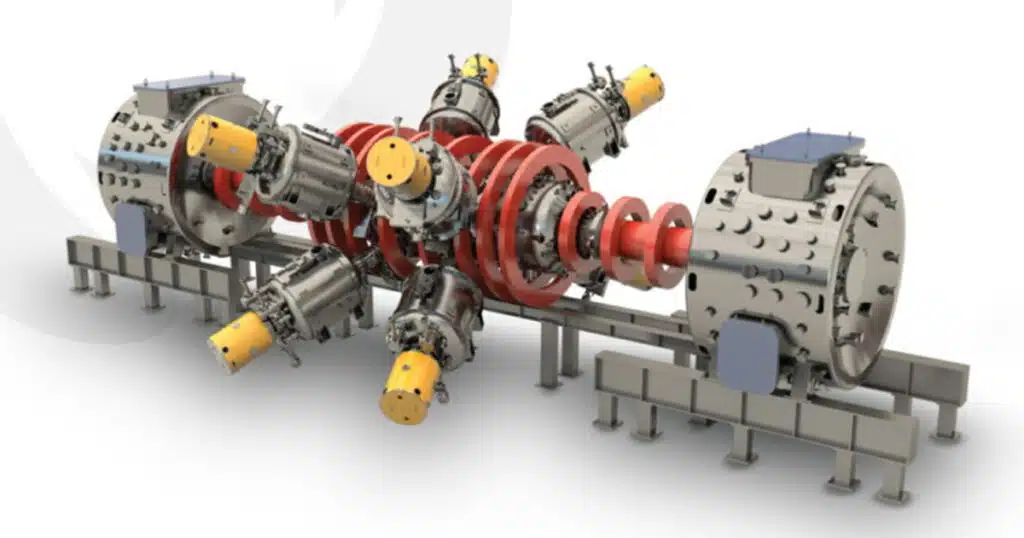
Will Nuclear Fusion Soon Be the “Norm?”
The dream of humanity to imitate the forces that created their habitat has been alive for at least as far back as the time when humans with a single language decided to build a city with a tower that reached the heavens. For such a people, “nothing they plan will be impossible to them,” it is recorded.
For at least the same time frame, humanity has sought comfort through technology. While primitive heat producers like coal and wood are still used today, the discovery that petroleum, natural gas, and even moving water could generate a newly discovered phenomenon known as “electricity” transformed the industrial revolution into the modern era.
Not until the 1930s did German scientists build on Enrico Fermi’s discovery that neutrons could split atoms to recognize that splitting atoms would release significant energy – energy that could be used for both bombs and electricity generation. By the 1950s, scientists began building nuclear fission-based power plants that today provide about a tenth of the world’s electricity.
Scientists and engineers also began to envision the potential of nuclear fusion — the reaction of light atomic nuclei powers the sun and the stars. Since that time, they have worked feverishly, but with little success, to replicate this energy-rich reaction using deuterium and tritium.
One group of scientists and engineers decided to try an alternative approach.
Founded in 1998, California-based TAE Technologies has been developing a reactor that runs on proton-boron aneutronic fusion – that is, a fusion reaction that fuses a hydrogen nucleus with non-radioactive boron-11 instead of fusing hydrogen isotopes of deuterium and tritium. Their goal is to develop commercial fusion power with the cleanest-possible environmental profile.
All efforts at fusion require chambers that can withstand temperatures of millions of degrees Celsius and immense pressure that are needed to fuse two isotopes together. To accomplish this requires huge amounts of energy – and until recently, more energy than the fusion produced.
Most fusion researchers, including those building the ITER project being built in France, rely on a donut-shaped tokamak reactor chamber, in which a stream of plasma must be held away from its walls by electromagnets for any energy to be produced. The tokamak design uses a toroidal magnetic field to contain the hydrogen plasma and keep it hot enough to ignite fusion.
Sadly, as with ITER, project costs have soared and timeframes have fallen by the wayside despite occasional breakthroughs. Over decades, tokamak designs became gigantic, with huge superconducting magnetic coils to generate containment fields; they also had huge, complex electromagnetic heating systems.
Spurred by the failures of wind and solar to fully satisfy the desire for “clean energy,” governments and private investors began investing heavily into fission and fusion projects. Oak Ridge, Tennessee, has tapped into a $60 million state fund intended to bolster both fission and fusion energy in atomic energy’s American birthplace.
New research at the University of Texas, in conjunction with Los Alamos National Laboratory and Type One Energy Group, uses symmetry theory to help engineers design magnetic confinement systems to reduce plasma leakage from tokamak magnetic fields.
The old method used for a stellarator reactor relied on perturbation theory. The new method, which relies on symmetry theory, is a game changer. It can also be used to identify holes in the tokamak magnetic field through which runaway electrons push through their surrounding walls and greatly reduce energy output.
The TAE Technology reactor is entirely different than any of the tokamak or stellarator fusion chambers. In 2017, the company introduced its fifth-generation reactor, named Norman, which was designed to keep plasma stable at 30 million C. Five years later the machine had proven capable of sustaining stable plasma at more than 75 million C.
That success enabled TAE to secure sufficient funding for its sixth-generation Copernicus reactor and to envision the birth of its commercial-ready Da Vinci reactor. But in between, TAE developed Norm.
Norm uses a different type of fusion reaction and a new reactor design that exclusively produces plasma using neutral beam injections. The TAE design dumps the toroidal field in favor of a linear magnetic field that is based on the “field-reversed configuration” (FRC) principle, a simpler, more efficient way to build a commercial reactor.
Instead of massive magnetic coils, FRC makes the plasma produce its own magnetic containment field. The process involves accelerating high-energy hydrogen ions and giving them a neutral charge, then injecting them as a beam into the plasma. That causes the beams to be re-ionized as the collision energy heats the plasma to set up internal toroidal currents.
Norm’s neutral beam injection system has cut the size, complexity, and cost, compared to that of Norman, by up to 50%. But not only is an FRC reactor smaller and less expensive to manufacture and operate, says TAE, it can also produce up to 100 times more fusion power output than a tokamak — based on the same magnetic field strength and plasma volume.
The FRC reactor also can run on proton-boron aneutronic fusion, which, instead of producing a neutron it produces three alpha particles plus a lot of energy. The fewer neutrons also do less damage to the reactor; the energy being released as charged particles is easier to harness. Less shielding is required, and, perhaps best of all, boron-11 is relatively abundant and not radioactive.
So, while “Norm” may not be the final step in developing commercial fusion energy, TAE’s hope is that fusion energy will the “norm” as early as the mid-1930s. FRC technology has materially de-risked Copernicus, according to TAE CEO Michi Binderbauer.
If Norm is as advertised, it will accelerate the pathway to commercial hydrogen-boron fusion – a safe, clean, and virtually limitless energy source.
But is humanity ready for free energy to be the “norm?”
Duggan Flanakin is a senior policy analyst at the Committee For A Constructive Tomorrow who writes on a wide variety of public policy issues.
This article was originally published by RealClearEnergy and made available via RealClearWire.



